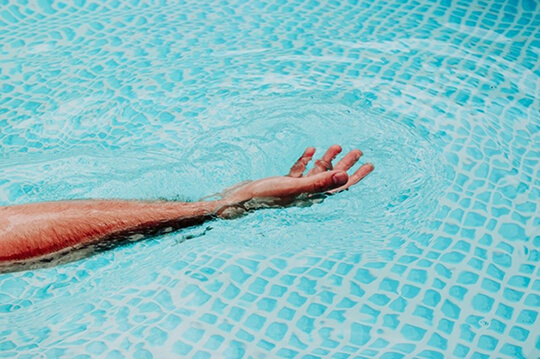
Hydrotherapy
- April 19, 2021
- Posted by Dr. Vaidya Karanvir Singh
- 0 Comment(s)
Hydrotherapy is done with the use of water, both internally and externally and at different temperatures, for health purposes. It is called water therapy or “water cures,” hydrotherapy includes medical treatments such as saunas, foot baths, steam baths, contrast therapy, sitz baths, and cleansing of the colon.
Although some types of hydrotherapy are generally used in ancient traditional medical practices, however, some hydrotherapy procedures are not encouraged by science.
Principles
According to a supporter of hydrotherapy, alternate use of hot and cold water induce physiologic changes that gives an advantage to human health. Among them:
- Hot water is significantly effective in the dilation of superficial blood vessels, activating sweat glands, removing toxic waste from body tissues, and loosening joints.
- Superficial blood vessels constrict, moving blood flow away from an affected area to relieve inflammation are caused by cold water.
- By counteracting gravity and reducing pressure on a joint or the body as a whole, immersing the body in water is said to relieve joint pain and muscle injury.
- There are various instruments used to deliver hydrotherapy, including full-body immersion tanks, whirlpool baths, body part-specific tubs, and cold and hot water compresses.
Types
Hydrotherapy is generally performed at naturopathy wellness clinics, health centers, spas, and physical therapy clinics, and even at home. Common types of hydrotherapy include:
- Aquatic exercises: Physical exercising in a pool of warm or cool water grants you to work with less resistance and compression on joints. It can give an advantage for people with osteoarthritis, neck pain, back pain, obesity, advanced age, or physical disability.
- Balneotherapy: Soaking in water that is rich in minerals or natural mineral hot springs are supposed to have a curative advantage, called balneotherapy, the practice helps treat osteoarthritis, lower back pain, fibromyalgia, and immune dysfunction, among others.
- Colonic hydrotherapy: It is also called colonic cleansing or irrigation of the colon, this practice includes rinsing feces from the colon (intestine), which proponents assure can be beneficial in clearing toxins and improve gut health.
- Compresses: In this type of hydrotherapy practice includes wrapping towels soaked in warm or cool water on a body part to increase blood circulation or to reduce inflammation. Aromatics compounds are generally added to the wraps for various therapeutic purposes.
- Contrast hydrotherapy: It is also known as water circuit hydrotherapy, it involves immersion in hot and cold water (alternatively) to treat chronic pain or support lymphatic drainage (thereby removing toxins from the body tissues).
- Floatation tanks: These are also known as immersion tanks or isolation tanks, this hydrotherapy practice involves floating to a trivial pool of saltwater in a sealed and darkened tank. Practice this type of hydrotherapy is supposed to relieve stress and anxiety, improve sleep, and relax muscles.
- Footbaths: Soaking your feet in water can help reduce swelling and pain after a long day on one’s feet. However, it can also be used to soften tissues before a foot treatment in a spa. Some specialists assure that food baths can balance blood circulation and reduce congestion in the head, lungs, and pelvic organs.
- Hot fomentation: In acute symptoms of colds, flu, or bronchitis, the application of warm compresses or hot water bottles to the chest is beneficial.
- Ice bath: This therapy is quite popular among athletes, ice baths involve soaking in a tub of water between 45degree F and 65 degrees F for a speedy recovery from an injury or extreme exercise. It is also known as cold water immersion, Cryotherapy is increasingly replaced by ice baths, which exposes the body to short bursts of air as cold as -280 degrees F.
- Sauna: It is a form of hydrotherapy in which dry, warm air is exposed to the body which induces sweating to release toxins, relax muscles, burn calories, and improve skin texture.
- Sitz bath: Sitz bath includes sitting in a tub of water to treat conditions affecting the rectal, anal, or genital regions. Sitz baths are generally beneficial for PMS (premenstrual syndrome), anal fissures, and hemorrhoids
- Steam baths: Steam baths include rooms which are filled with warm, humid aid that supporter claim, it can amplify the advantages of a sauna. Turkish baths are a type of steam bathing that provides lower temperature and higher humidity.
- Therapeutic baths: These therapeutic baths include soaking in a tank of warm water to treat emotional stress, skin conditions, joint problems like osteoarthritis. Some additives are used such as including aromatherapy oils, dead sea salts, Epsom salt, and herbs. Mud baths are also a type of therapeutic bathing.
- Whirlpool hydrotherapy: Rather than immersing a body part like a limb or body in still water agitated water is used, a whirlpool is supposed to offer additional advantages, including enhanced blood circulation and improved tissue repair after a burn, ulcer, or other skin injuries.
Precautions
- Hydrotherapy may not be advised or prescribed to everyone. Because exposure to sudden cold or prolonged heat can have damaging effects on the CVS (cardiovascular system).
- Soaking for a longer time can result in skin maceration and infection.
- Similarly, cleansing of the colon can disturb the normal flora (bacteria) in the lower large intestine as well as the electrolyte balance in the body if overused.
Hydrotherapy may need to be restricted or used with precaution in such people who have the following health conditions:
- CVS (Cardiovascular) disease
- Thrombosis
- Hypertension
- Pregnancy
- Cough, Colds, or other respiratory infections
- Skin infections
- High fever
- Incontinence of urine
- Kidney disease
- Carcinoma

Dr. Vaidya Karanvir Singh is the younger Vaidya in Chandigarh Ayurved & Panchakarma Centre. He is the fourth generation in his family who is practicing as a general consultant in Ayurved & Panchakarma treatment at Chandigarh. In his practice, he had treated more than 1 Lakh Plus patients worldwide.

